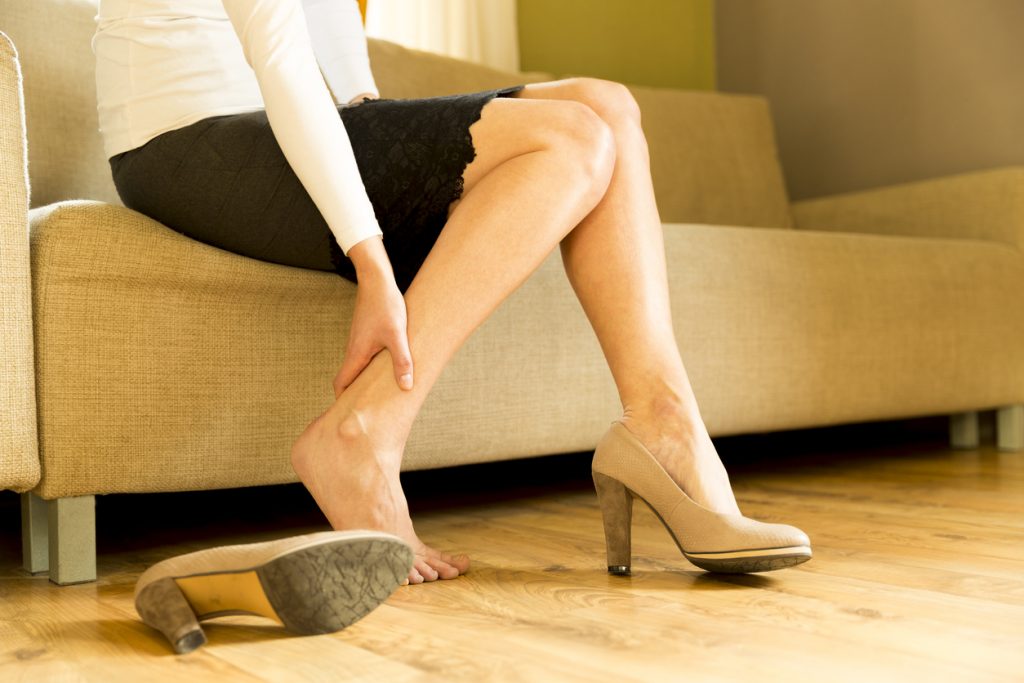Aching Legs and Varicose Veins

Do you have aching legs? It may be a sign of varicose veins or venous insufficiency.
Aching legs is one of the signs of varicose veins. Other signs include visible blue or purple veins, swollen feet or ankles, burning or throbbing legs, and muscle cramps in your legs.
Why Do Varicose Veins Cause Aching Legs?
Aching legs associated with varicose veins are the result of poor blood circulation.
Blood vessels transport oxygen to cells around the body. More specifically, arteries carry oxygen-rich blood from the heart to the rest of the body. Cells use the oxygen-rich blood to function. As they work, cells produce carbon dioxide and other toxins, which get deposited into the bloodstream. Veins carry away the blood, along with the toxins, back up to the heart.
Arteries get a little help from gravity when it comes to pumping blood from the heart to the rest of the body. Veins, on the other hand, have to fight gravity to move blood upwards from your feet to your heart. Elasticity helps the blood move, in that the flexible veins squeeze blood upwards.
Every beat of your heart pushes the blood a little further through your veins. In between heartbeats, though, gravity can pull the blood in the veins downwards towards your feet. Doctors refer to this as reflux.
Tiny valves inside your veins help prevent reflux. These valves open when your heart is mid-beat to allow blood to flow. They close in between heartbeats to prevent the blood from flowing backwards.
Varicose veins develop when disease or damage prevent the valves from opening and closing as well as they should, or when the veins lose their elasticity. Valve dysfunction and damaged veins allow blood to flow backwards into the lower legs, and accumulate there. The veins respond to the increased presence of blood by bloating, or enlarging, to accommodate the extra blood. Bloated veins near the surface of the skin appear as varicose veins. The pressure of the extra blood can also press against nearby nerves and tissue to cause aching legs.
Aching legs may also be a sign of venous insufficiency, a condition caused by poor circulation and varicose veins. Venous insufficiency is a medical condition in which the veins do not work as well as they should. Chronic venous insufficiency (CVI) is a long-term condition characterized by poorly-functioning veins.
Varicose veins are just one type of venous insufficiency. Deep vein thrombosis (DVT), which is a blood clot that blocks the flow of blood through a vein, is the most common cause of venous insufficiency.
Varicose Vein Treatment Stops Aching Legs
Fortunately, doctors can treat varicose veins and chronic venous insufficiency to reduce aching in your legs. Treatment involves irritating the affected vein, which causes the vein to swell up and close. Eventually, the treated vein breaks apart; nearby tissue absorbs the remnants, and the varicose vein disappears. The body reroutes blood flow to other veins.
For more information on aching legs and other signs of varicose veins, consult with the doctors at Kimmel Institute. We offer a wide variety of varicose vein treatments, including laser ablation, ambulatory microphlebectomy, ultrasound guided chemical ablation, and foam sclerotherapy.
